How Many Solar Panels Do I Need?
You’ve decided you might want to go solar and you’re taking the first few steps of your journey. If you’re like most of New England Clean Energy’s customers, you probably want the best solar panels you can get, with the best possible efficiency. What you don’t know is how many solar panels you’ll need for a system that’s right for you!
New England Clean Energy is all about making it easy for you to get started and we offer several different ways to find out exactly how many solar panels are right for you!
You can talk to Our Experts at 877-886-8867 or Get a Ballpark Estimate using our AI-driven estimation tool.
Please Note that this AI-Powered Solar Calculator system will just estimate the total watts of solar power you’ll need, i.e. 7.5kW (or 7,500 watts). To get a rough estimate of panels, just divide by 400. The panel you end up choosing will determine the final number.
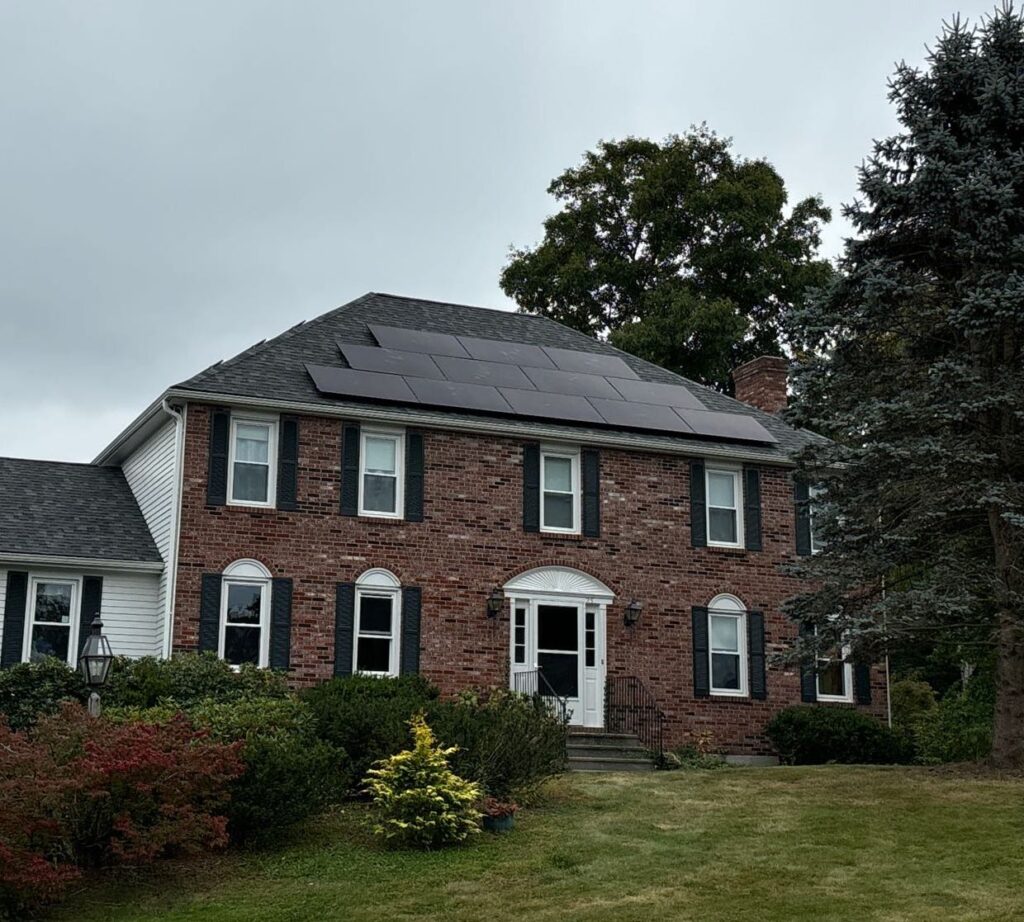
At a cost that ranges from $20,000 up to $50,000 or higher (depending on how big a system you need to cover your electric bill or have room for), residential solar panels are a sizable investment for most homeowners.
So whether you’re ready to go solar today – or just thinking maybe sometime in the distant future, give us a call at 877-886-8867 and we will set you up with a free consultation that can show you exactly how many panels you need.
OR, if you want a quicker estimated answer don’t hesitate to use our instant ballpark estimate with our self-assessment solar cost tool to get an estimated cost of your system and you can easily calculate the number of panels.

Have Questions about How You Can Make Solar Work For You?
New England Clean Energy is all about making it easy for you to get started and we offer two ways to find out how solar can work for your home or business!
Use our AI-driven estimation tool to get an instant ballpark estimate and see savings with our self-assessment solar cost tool.
Speak with an expert solar consultant to get a free evaluation, with a complete and detailed proposal.
Factors Impacting The Number of Solar Panels Needed
Available Roof Space
A typical residential solar electric system can be installed in about 200 to 600 square feet of roof space but there are solar installs that require no roof at all!
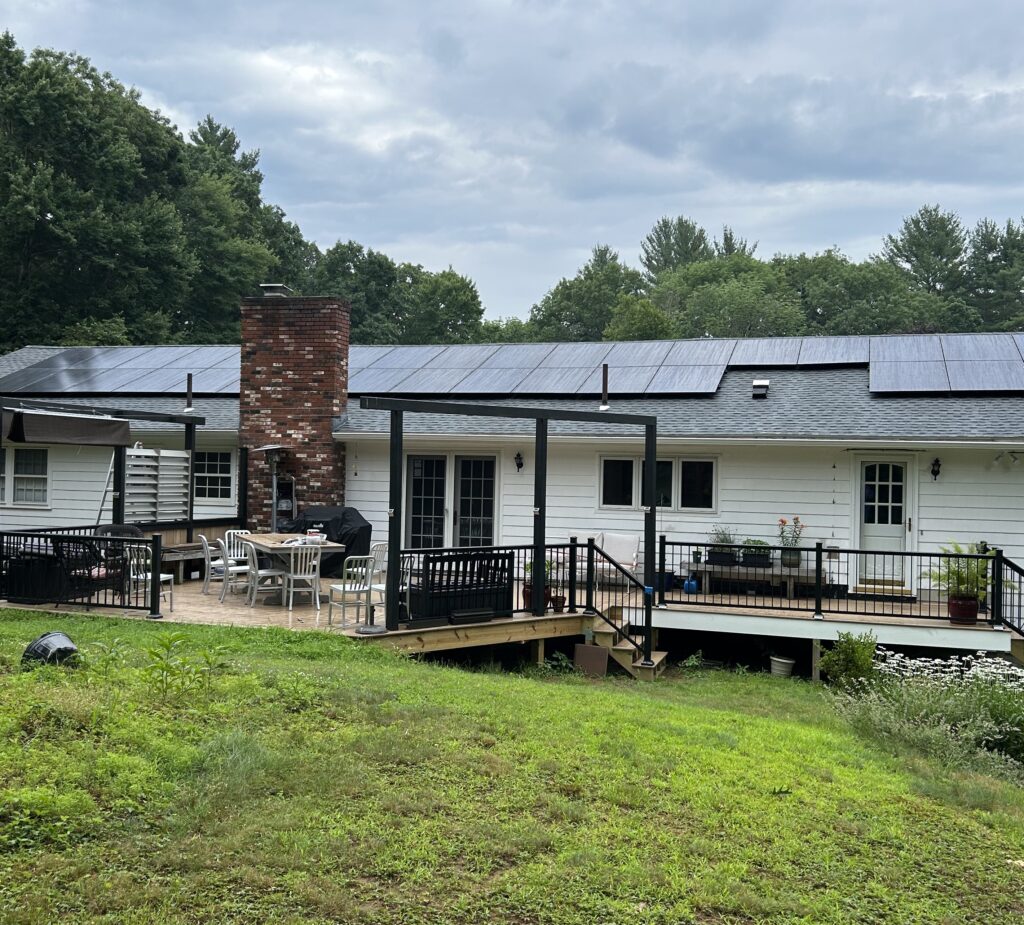
Solar Panel Size
To understand how many solar panels you’ll need, you must know the standard sizes of solar panels to know how many you can place on your roof. The area of a residential 60-cell solar panel is about 17.6 square feet. We measure the area of your roof to determine how many panels can be installed safely in an aesthetically pleasing design.
In general, the average solar system for a home consists of 20 to 25 panels, but the exact number you’ll need will depend on numerous factors, including where you live, how much energy you typically use, and how much power your panels can generate.
Hours of Sunlight
The amount of energy you’ll get from your solar panels is directly related to how much sun your home gets. More panels will be required if you live in an area without long hours of strong sunshine.
Wattage of Your Panels
Most solar panels range in wattage from 350 to 420 watts per panel; bigger commercial panels can be even larger. If you choose lower wattage panels, you’ll need more panels in order to generate enough energy for your home.
This assumes that your goal is to replace 100% of your energy usage with solar energy and you don’t have a very big roof, but if you’re good with covering at least some of your electric bill, the difference in solar panel wattage may not matter as much. After all, eliminating part of your electric bill is better than paying the entire thing.
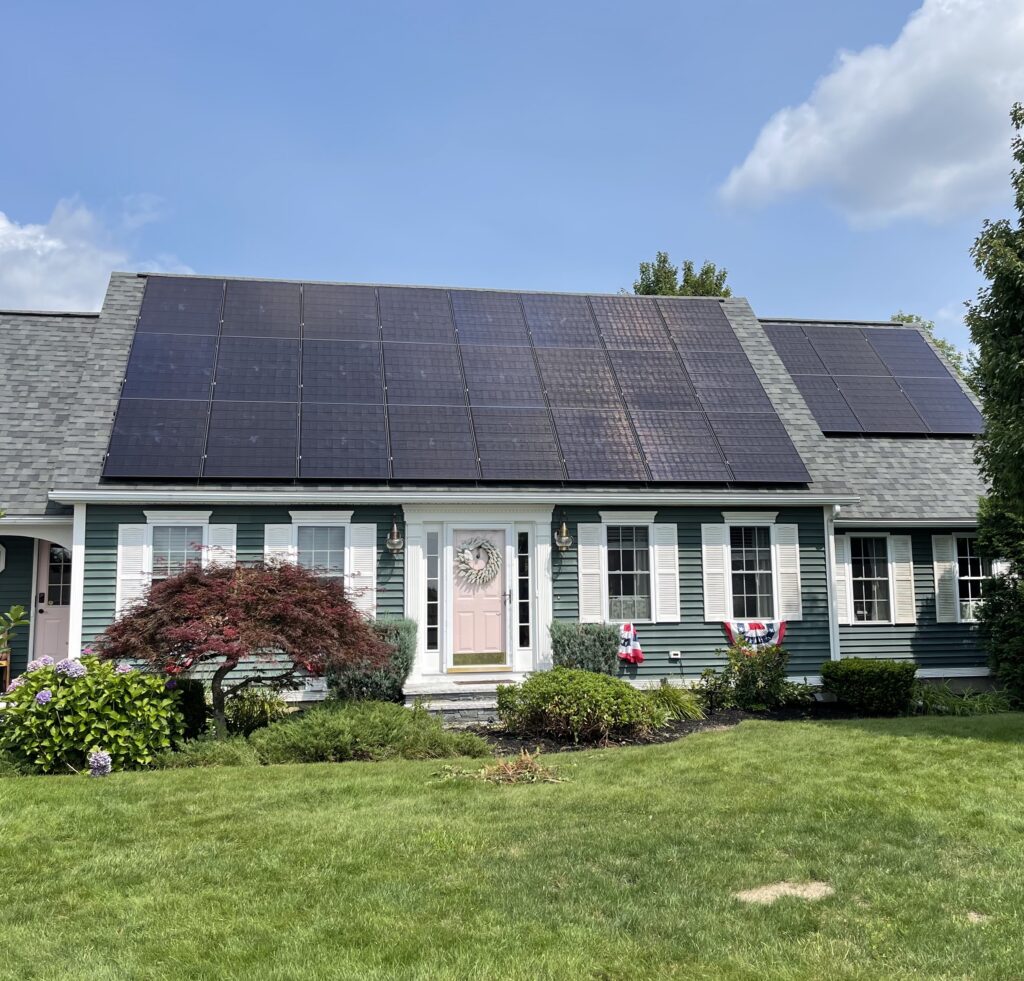
Cost of Solar Panels
How much do you want to or plan to spend on your solar panels? Before you buy, make sure you know how many make sense for your budget.
Solar Panel Output Efficiency
Your solar panels won’t draw the sun’s energy at top capacity all the time, but a solar expert can size your system correctly based on your current use and the weather in your area. But one big thing to consider is your electricity usage in the future. What if you get an electric car? How about a heat pump instead of fossil fuel powered central heating? Or perhaps you’ll replace your gas stove with electricity.
The one thing for certain is that no one has ever told us they wished they had bought fewer solar panels!
One of the easiest ways to start to understand how many solar panels you will need for your home is to use our online solar panel calculator (link). Like our experts, it’ll factor in your current usage and where you live. If you think you’ll need more in the future, just bump up the numbers for your current usage.
How Many Solar Panels Are Right For Your Home?
There are three main factors that affect how much solar power you need. Your annual electricity usage, your solar panels wattage, and production ratios for your site.
To get you a number, our incredible solar sales consultants will first review your latest electric bill to determine the number of kilowatt-hours of electricity you use each year. Kilowatt-hours are the measure of the electric energy you use to run your home; meaning all of your lights, your refrigerator, air conditioners, phone chargers… you name it.
Annual Electricity Usage
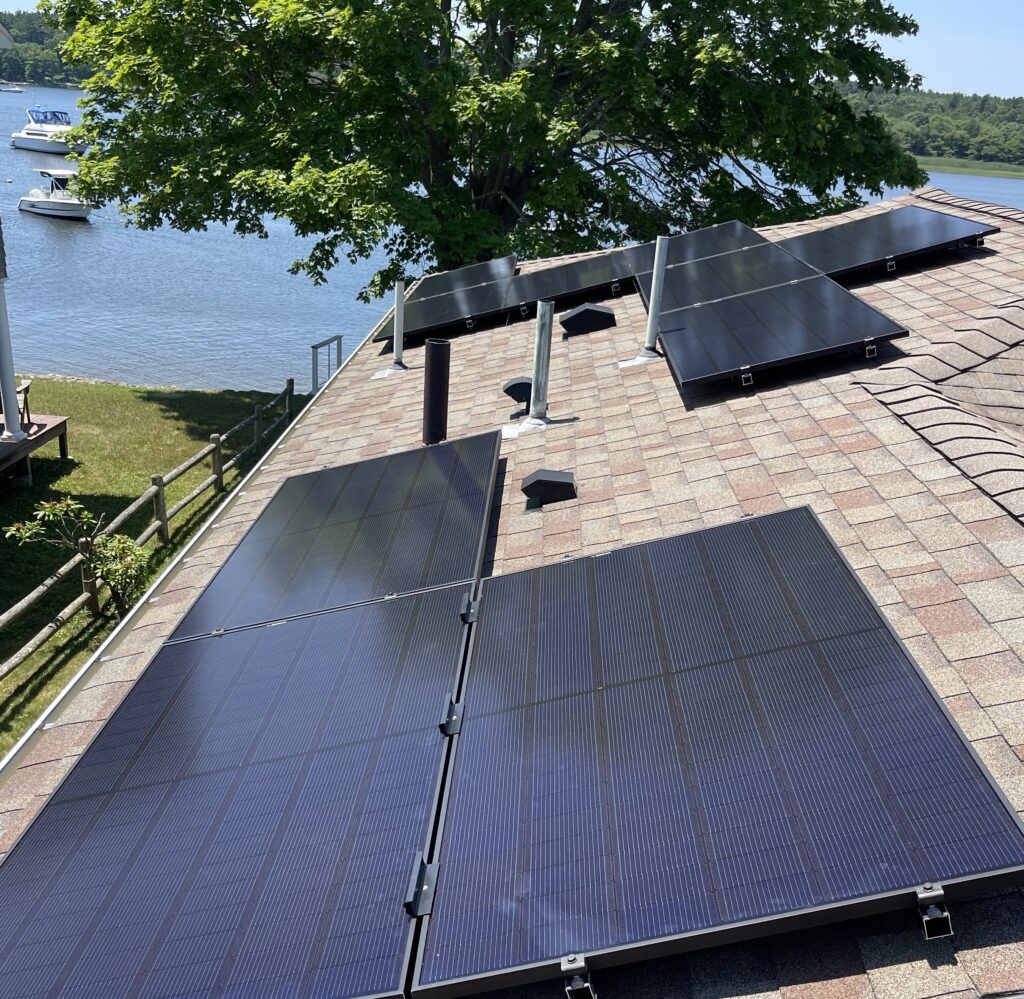
This is the amount of energy and electricity you use over the span of a year. As I stated earlier, this is measured using kilowatt-hours (kWh). In order to get the exact number, you’ll want to check out your utility bill and find out how much electricity you used over the last 12 months. The more electricity you use the more kilowatt-hours (kWh) you’ll need to cover.
The U.S Energy Information Administration (EIA) says that the average American household uses about 10,715 kWh of electricity per year. If you are thinking of adding more things in your home that use electricity (a heat pump, an electric car), then you’ll want to note that as well.
But remember, even if you can’t cover 100% of your usage, you can still save big on what electricity load you can cover with solar. Saving money on 50% of your electricity needs is far better than zero.
Solar Panel Wattage
Once you know how much energy you need, factor two is a solar panel’s wattage, which is also known as a solar panel’s “power rating”.
Most residential solar panels fall in the range of 350-420 watts of power per panel. That power rating can then tell us how much energy, or how many kilowatt-hours (kWh), the panel can produce under “ideal conditions”. But of course, most homes do not have ideal locations, so we have a few more factors to consider.
To begin, where your home is located plays into how much energy a given watt of power can produce. If you live here in New England it’s going to be less than if your home was out in Arizona.
But more locally, there are issues related to your specific home. For example, does your roof face a direction other than South? East and West are good, but the energy production you get will be less than it would if it faced South.
Use Our Solar Calculator to Find Out If Your Roof is Good For Solar
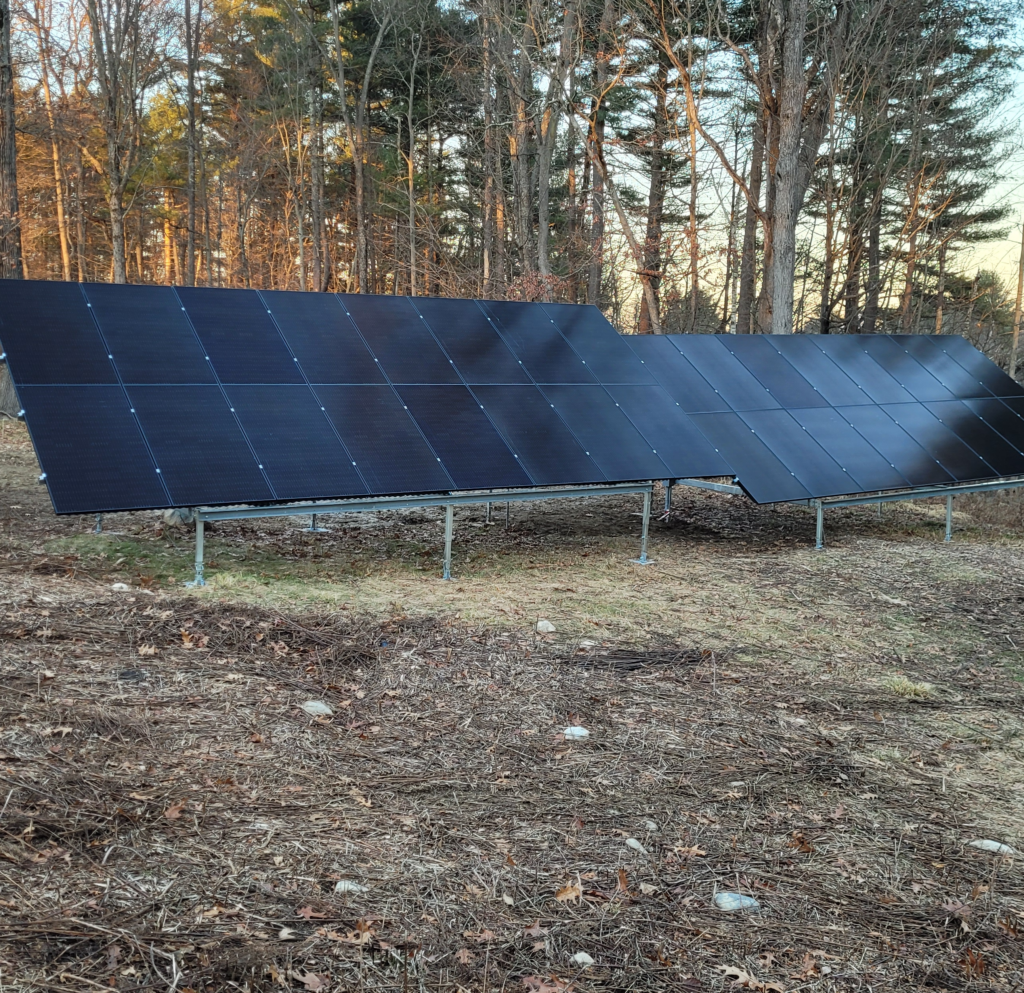
LIDAR, which stands for Light Detection and Ranging, is a remote sensing method that uses light in the form of a pulsed laser to measure ranges (variable distances) to the Earth. LIDAR thus helps us accurately determine the dimensions of your home and other buildings as well as tree size and height.
Thus armed with a very accurate model of your home and property, we then design a solar system for your roof which is used to calculate how much power (or kWh) the designed system will produce for you each year. Therefore replacing all or a good share of the kWh you’re currently buying from the utility. Since you own the system, it is power you will not have to pay for, saving you money for the next 25-plus years.
We Want Our Measurements to Be Right
If that all looks good to you, our plan is close to complete, but the job is not yet done. Before the plan is finalized, your consultant will travel to your home or site and gather physical measurements of the roof and rafters (for our engineers).
In some cases, we may even use a tool to do an on-site “shade reading” to double-check what was modeled in our design tool. As they say, measure twice and cut just once.
Once we have completed a full evaluation and site visit – you will have a final count for the number of solar panels you will need for your home or business.


